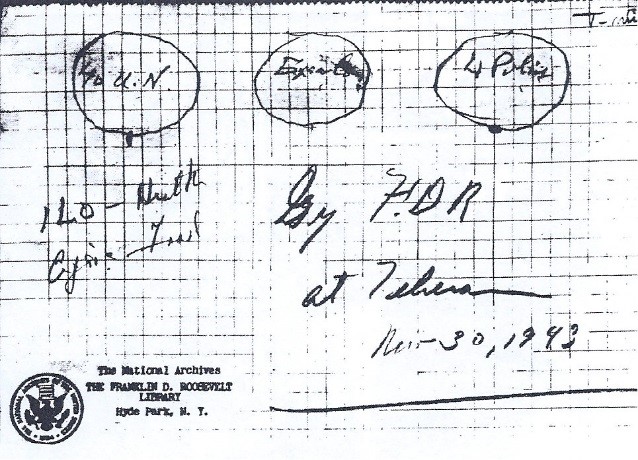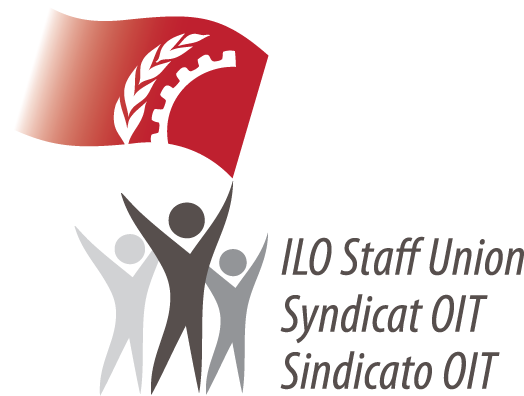President Roosevelt and the Declaration of Philadelphia / Edward J. Phelan, Director-General 1942-1946.
Category : Centenary - Testimonials
The International Labour Conference met in Philadelphia in 1944 although WWII was still raging. It framed a Declaration not only restating the aims and purposes of the ILO, but formulating the fundamental principles on which a peaceful world society could be built, a Declaration to which President Roosevelt publicly gave his endorsement, welcoming it as “fitted to take its place beside the Declaration of Independence”.
This phrase, and indeed the whole of his statement, which stressed in a succession of equally striking terms, the importance he attached to the Declaration, must have seemed to many to reflect his enthusiasm of its social content, which corresponded in many respects to his own social philosophy. In reality, he regarded the Declaration as having a much deeper significance and an immediate practical utility. His major preoccupation had long been the problem of peace. When he first took office as President of the United States in 1933, he was fully conscious of the darkening international horizon, but found himself in the presence of “deep-seated convictions among his people on both political and economic isolation”.
The problem, as Cordell Hull described in his memoirs, was to find some method of pursuing international cooperation and educating the United States in its operation “without precipitating isolation as an acute political issue in the Nation”, which could only have resulted in his Administration being “thrown bodily out of power as soon as the American public had a chance to get to the polls”. Under those circumstances, joining the League of Nations was out of the question, but the International Court and, more importantly, because of its continuous activity, the International Labour Organisation, offered an opportunity “of convincing Americans that the United States was an integral part of world cooperation”.
Frances Perkins has told, with vivid detail1, the way in which President Roosevelt in 1933 guided the various steps by which the consent of Congress was obtained for United States membership in the ILO in 1934. Although the chapter in which she recounts her conversations with the President on this subject deals only with the ILO, it is significantly entitled “Approaches to World Order”.
The latter part of the chapter tells of his continued interest in the ILO after membership had been achieved, and of how he devoted himself “enthusiastically” to receiving the ILO delegates when they came to the United States in 1941, and it concludes with the words: “The success with the ILO was to bear fruit in a wider sphere.” Against this background it is easy to understand President Roosevelt’s interest in the ILO conferences in New York and Philadelphia (1941 and 1944 respectively). Both conferences, but more particularly, that of Philadelphia, were, for him, a testing ground of the possibilities of international cooperation, “a rehearsal”, as Cordell Hull puts it2, for a later conference that would draw up an organic statute under which the United Nations might build an enduring peace. Therefore, what particularly inspired the President’s enthusiasm for the Declaration of Philadelphia was the way in which, to use his own words, “it summed up the aspirations of an epoch”, and placed those aspirations in the framework of “universal and lasting peace based upon social justice”.
Although President Roosevelt’s speeches, read in the light of what has been written by Mr. Cordell Hull and Miss Frances Perkins, are in themselves conclusive enough, there has recently become available a peculiarly interesting confirmation of the place which the ILO occupied in his thinking about the future peace structure of the world. It is no more than a scrap of paper on which have been scribbled some half-dozen words in diagrammatic fashion. Its interest lies in the fact that they are in Roosevelt’s handwriting and on the occasion in which they were written.

Robert Sherwood has recounted how in Teheran, in 1943, Roosevelt outlined to Stalin his ideas for a post-war organization based on the United Nations which would deal with the problems of peace3. The President’s exposé, as summarized by Sherwood from Harry Hopkins’ papers, suggested that there should be an Assembly, an Executive Council and enforcement machinery which he referred to as “the four policemen” (the USSR, the United States, the United Kingdom and China). There is no reference in the summary of the President’s exposé, nor in that of the discussion which followed, to the ILO, but Harry Hopkins preserved a slip of paper on which the President had rioted, either before or during the discussion, the points which he intended to make. Three roughly drawn circles represent the Assembly, the Council and “the four policemen” and underneath them the President wrote “ILO – Health – Agric. – Food”.
What is interesting is that it is not the subjects with which the ILO deals which are indicated, but the ILO itself, presumably because the President thought of it as a going concern, and an institution which would naturally take its place in the new structure and continue its activities under the new dispensation.
A long road had been travelled since the day when the President, ten years earlier, remembering “how Wilson lost the League of Nations”, had authorised Miss Perkins to take the first cautious steps to secure United States’ membership in the ILO4.
The whole history of the effort to build a structure of world peace revolves around the progress of the United States from a position of extreme isolation to one of leadership in the creation of the United Nations. The honour of having been the portal through which that progress began, belongs wholly to the ILO.
_______________________________________________
Notes
1 See Frances Perkins: The Roosevelt I Knew (New York, The Viking Press, 1946), pp. 337-346.
2 Mr. Hull indicates that his motive also played a part in the calling of the Bretton Woods and the Food and Agricultural Conferences. See The Memoirs of Cordell Hull. (New York, The Macmillan Company, 1948) pp. 176 and 177.
3 See Robert E. Sherwood: Roosevelt and Hopkins: An Intimate History, (New York, Harper & Brothers, 1948).
4 Frances Perkins, op.cit. p. 340
 The Section of Former Officials of the ILO
The Section of Former Officials of the ILO